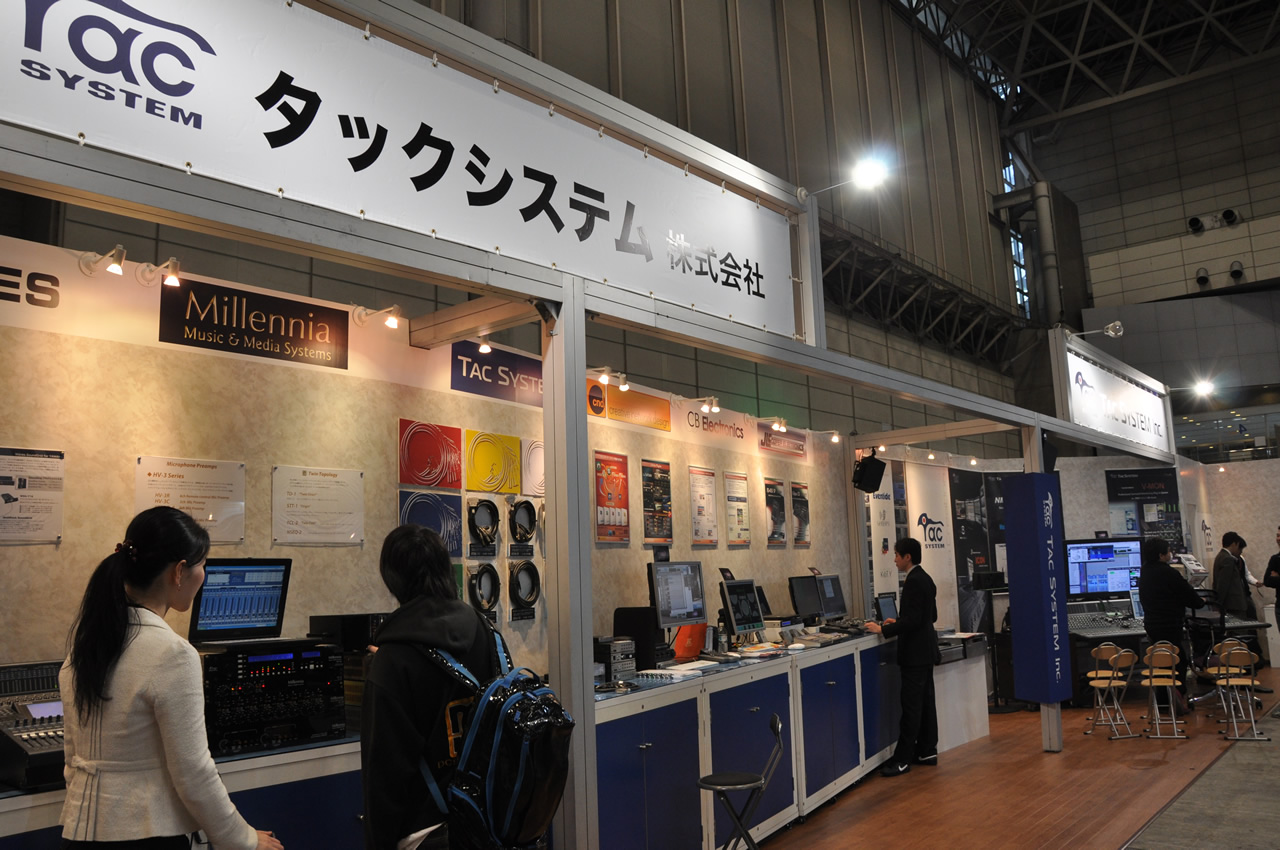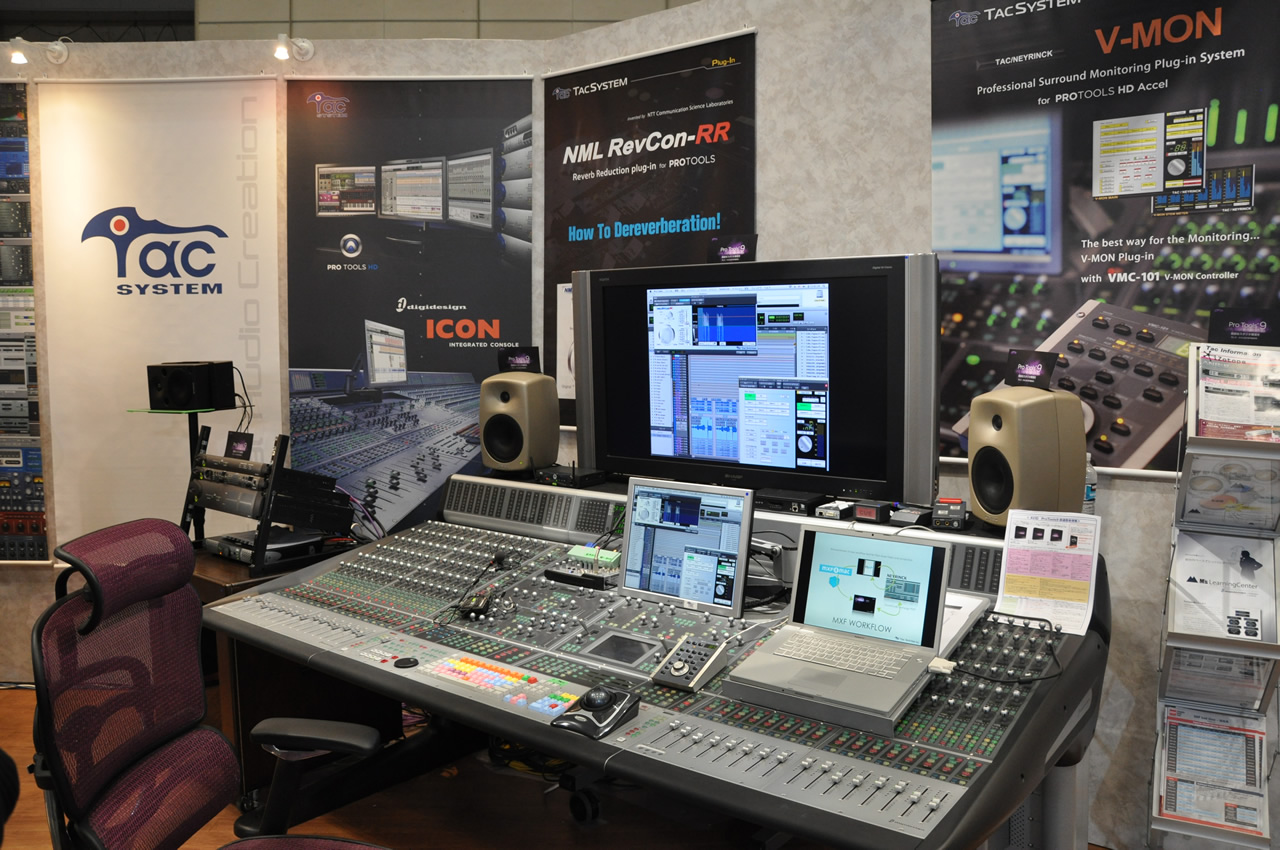Inter BEE 2010: TacSystem introduces 2ch audio to 5.1ch surround software plug-in NML RevCon-RS and MXF workflow.
2010.11.21 UP

Tacsystem in booth 4208 demonstrated their NML RevCon-RS (Real Surround) audio 2ch to 5.1 surround conversion plug-in for Digidesign's ProTools software, which uses reverberation control technology developed by NTT and NTT Learning Systems. They also demonstrated the SoundCode Exchange MXF plug-in software from Neyrinck.
■ The NML Rev-Con-RS stereo analog to surround software demo with reverb control technology
NML Rev-Con-RS (Real Surround) is a ProTools plug-in that uses reverb control technology to convert stereo analog signals into surround sound, and is on sale this year. The software also uses the Revtrina technology developed by NTT Communications Science Laboratories to analyze the characteristics of the 2 audio channels from a CD or other stereo source, and separate the direct components from reverb components, which enables users to reduce or accentuate the reverb depending on the kind of effect they want to achieve, and assign it to any channels to create a high-quality surround sound source.
Tacsystem production manager Atsushi Yamazaki described the NML RevCon-RS plug-in software- "we have been getting a lot of interest in this product from people all over the world, it was also selected as on of Mix Magazine's Top 10 Mix NAB Certified Hits at the NAB show held in April 2010."
■ File-based MXF workflow demonstration
Tacsystem also introduced the SoundCode Exchange MXF from Neyrinck -- an audio file import and export tool that enables MXF file-based workflows.
SoundCode Exchange MXF enables import and export of audio only from MXF files in AVC-intra formats such as OP1a or OPatom, and allows users to check metadata. As an MXF workflow proposal, Tacsystem linked up SoundCode Exchange MXF and MXF4MAC and demonstrated this MXF workflow in their booth.
Mr. Yamazaki says SoundCode Exchange MXF is going to be adopted by a broadcasting station in Germany who is currently testing it. The system is due to go on sale in 2011, once the German broadcasting station gives it the OK.








